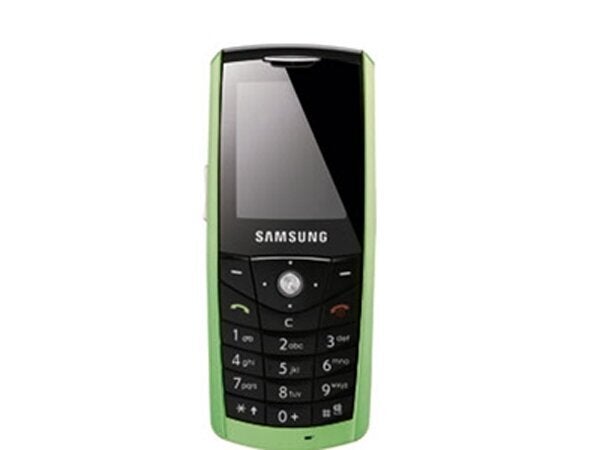
Predictions of "revolution" in the mobile tech world come at a dizzying pace these days. Google CEO Eric Schmidt said at the World Economic Forum in Davos this year that innovative applications for mobile devices would bring the "recreation of the Internet." And when Apple exec Steve Jobs unveiled the iPhone in January, he said it would "reinvent" the telecommunications industry.
Enter the Samsung E200 Eco, a mobile phone packaged in recycled paper and made with a corn-based "bioplastic" shell instead of hard-to-recycle polycarbonate. Revolution? The end of e-waste? Not exactly. With standard-issue circuitry filling its techno-belly (plastic makes up only 40 percent of a typical phone), the E200 Eco hardly solves the mess of problems created by high tech trash. But as the latest addition to a small but growing number of mobile devices that use unconventional materials without skimping on slickness the E200 Eco represents the rethinking of greener design. Don't hold your breath for a U.S. release. Samsung plans to launch the E200 Eco early next month in Europe, where manufacturers are required to "take back" old electronics.
With all the recreating and reinventing taking place in the mobile world, we're junking older gadgets--many of them packed with heavy metals and encased in plastic--in record numbers. Americans discarded more than 140 million cell phones in 2007, according to EPA data. And while the agency reports most of those phones went to landfills, activists with Greenpeace and Seattle's nonprofit Basel Action Network say electronic waste collected for recycling often ends up going to China, India, Pakistan, and most recently, Ghana. According to the Los Angeles Times, workers "then use hammers, gas burners and their bare hands to extract metals, glass and other recyclables, exposing themselves and the environment to a cocktail of toxic chemicals."
Exacerbating the gimme-gizmo-du-jour effect is the fact that, in contrast with other countries, cell phones in the U.S. usually are not interchangeable between service providers: Switch carriers, and you'll probably need a new (or refurbished) phone. Silicon Valley Toxics Coalition executive director Sheila Davis said in an interview yesterday (before jetting off to document the impacts of U.S. e-waste exports to India) although demand for outdated phones can often be found outside the U.S., "a lot of companies don't want phones entering secondary markets. They want to sell new phones there." She added that phones belong in the same group of e-waste as computers. "The only distinction," she said, "is they're much smaller." So while they don't clutter images of tech trash dumps, they do have a big impact.
If you're looking for a new phone and want to minimize its environmental impact, Davis recommends asking about take-back programs up front. "Giving a phone back should be almost as easy as purchasing it."
Share your tips: What do you do with old electronics?
